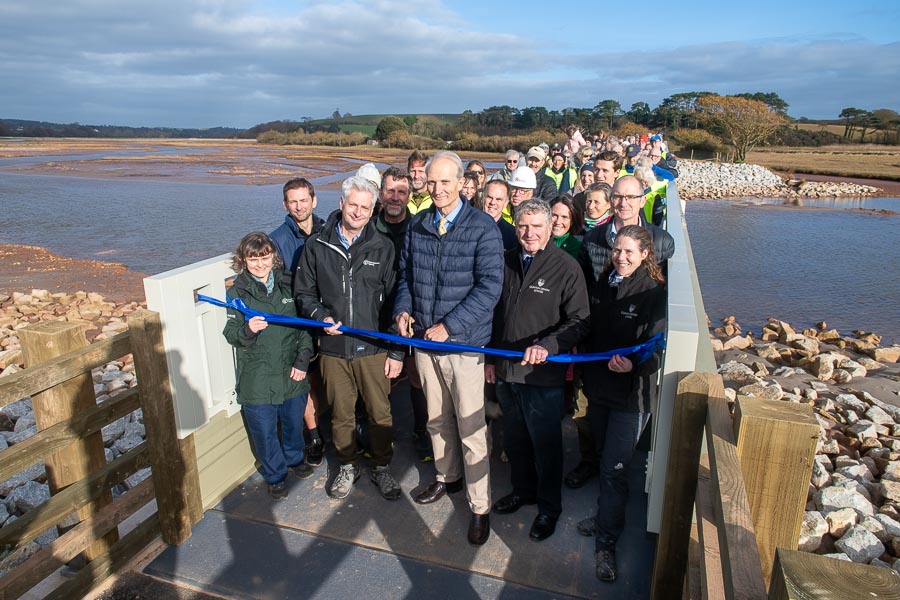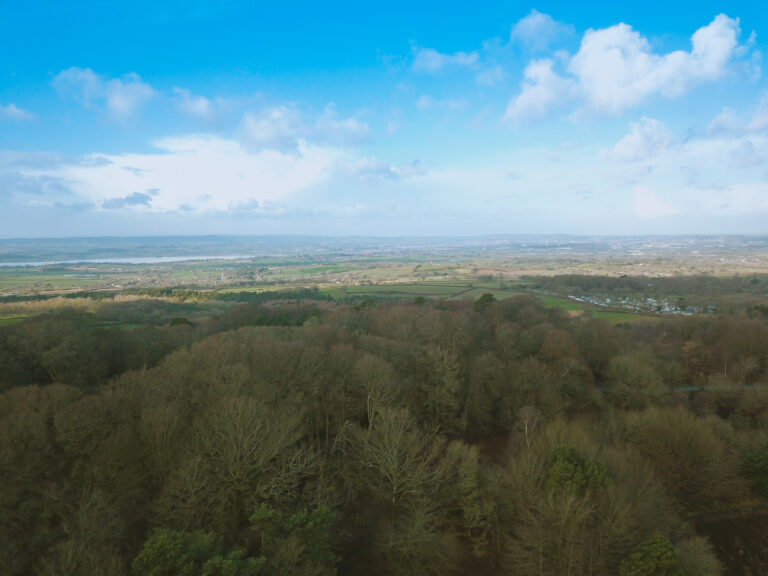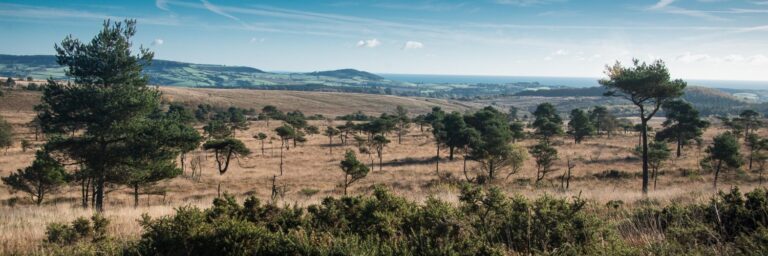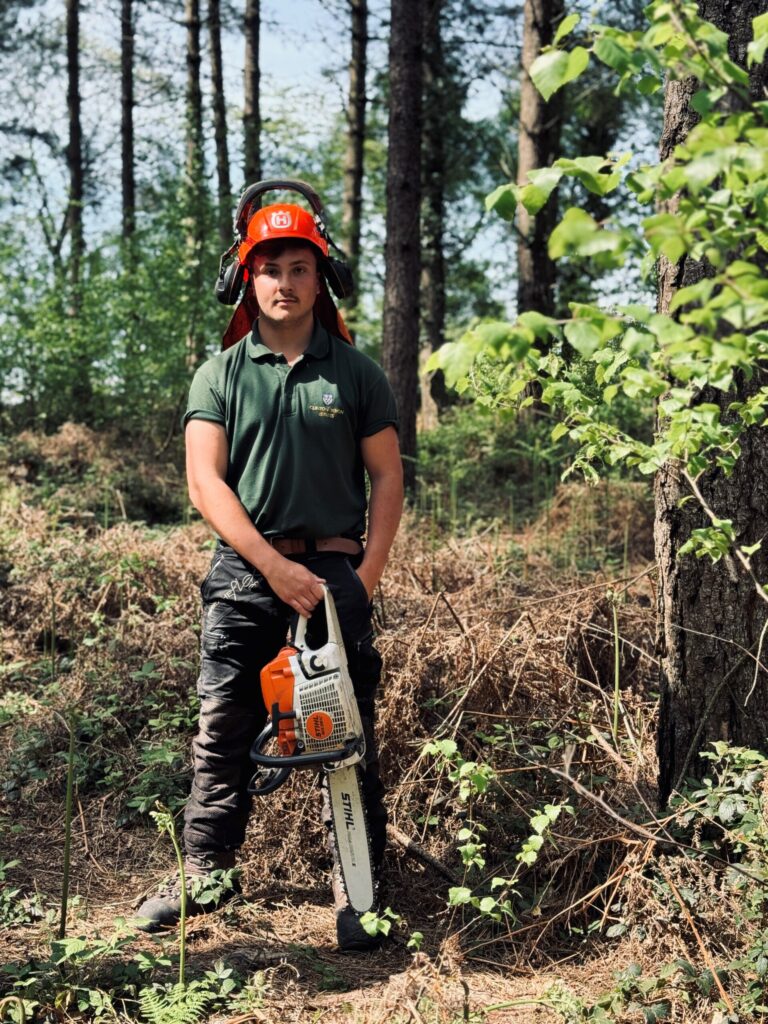Footbridge opens at Lower Otter Restoration Project
Work on one of the most significant conservation projects in South West England is nearing completion. The Lower Otter Restoration Project (LORP) at Budleigh Salterton, East Devon, is creating 55 hectares of mud flat and saltmarsh by allowing the tide to flow freely in and out of a new inter-tidal area.
Two centuries ago, an embankment was created to hold back the sea in order to create more farmland. In recent years, the embankment had started to fail, putting recreational facilities, footpaths, a municipal tip and other infrastructure at risk from serious flooding.
On Friday 24th November, a new 70-metre footbridge opened, re-connecting the South West Coast Path, that spans a breach made in the 200-year-old embankment. The breach reconnects the sea and the river to its original floodplain.
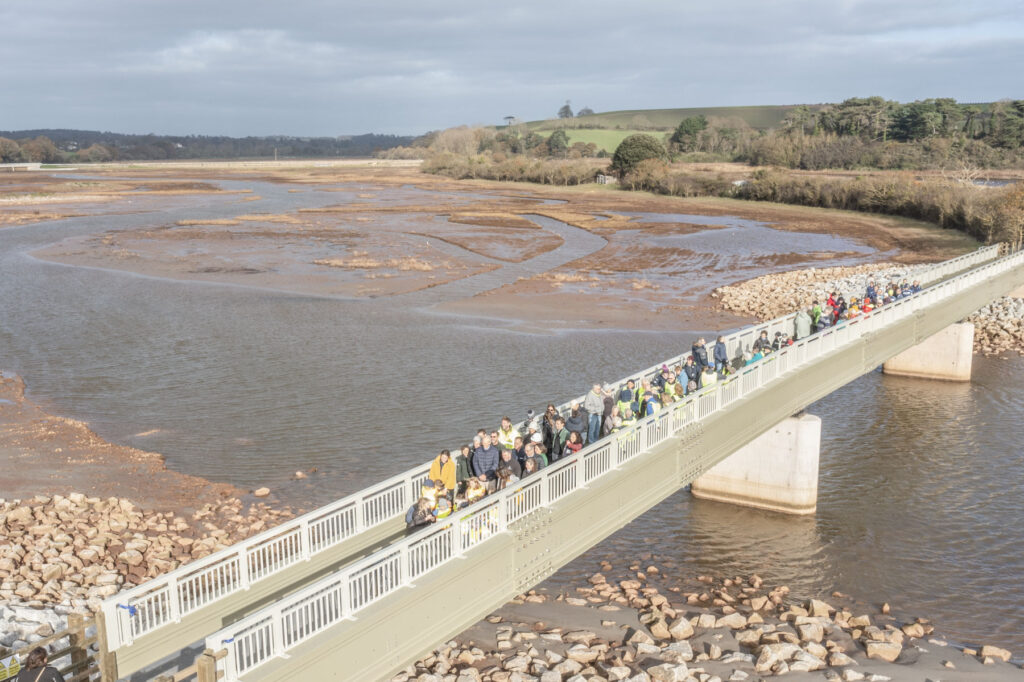
The project, which has taken almost 15 years from initial idea to completion, came about initially as the 22nd Baron Clinton, whose family own Clinton Devon Estates, contemplated the real risk that embankment failure and catastrophic flooding resulting from rising sea levels and heavier and more frequent storms could swamp land and impact on communities in the Lower Otter valley.
The Estates’ Chief Executive, John Varley OBE TD, worked with Haycock Associates to develop a number of options and the Estate consulted widely on the future for the Otter Valley. John said “We were basically replacing a traditional English pastoral landscape for a wetland. We needed to take people with us”.
Together, the Estate and the Environment Agency devised an ambitious plan to re-connect the River Otter and estuary to its former floodplain – providing space for floodwater and creating habitat for invertebrates, fish, waders and wildfowl.
For Clinton Devon Estates, LORP is central to its 2030 Strategy on land-use, with two of its ambitions being adaptation to a changing climate and the restoration of the ecological health of its land holdings. John Varley said: “Everything we do is with tomorrow in mind. There was a danger that without the Lower Otter Restoration Project there would have been no ‘tomorrow’ for parts of the Estate or for our tenants and neighbours.”
In tandem with a sister project in the Saâne Valley, Normandy, some investment came from the EU under the banner of PACCo – Promoting Adaptation to Changing Coasts. The aim of this scheme was to demonstrate that it is possible to adapt to climate change and to provide a model that could be adopted by up to 70 other at-risk estuaries on both sides of the English Channel.

Dr Sam Bridgewater, Clinton Devon Estates’ Director of Environment Strategy and Evidence, and the Estates’ lead on the project, said one of the biggest challenges was having to restructure the Estate landholdings to accommodate the project. For example, working with tenant farmers to adapt their business models to an uncomfortable climate change reality and finding a large, flat piece of ground to re-locate the often-flood hit local cricket pitch.
Sam went on: “LORP has been a great partnership project and with the Environment Agency we found a partner whose vision and ambition matched our own.”
The Environment Agency managed the development of the scheme, appointing engineering consultant Jacobs to lead the design of the project, contractor Kier to carry out the construction work and with specialist ecological support from Hi-Line.
Significant positive changes have already been recorded, both for the benefit of local people, visitors, and wildlife. South Farm Road, which in the past has been impassable due to flooding, has been moved and raised by the project. Budleigh Salterton Cricket Club has now moved to a flood-free pitch, with improved facilities enabling them to grow youth, women’s and disability cricket with a stunning new pavilion. New signage, interpretation and parking is also in place to help visitors understand and enjoy the site and identify its wildlife.
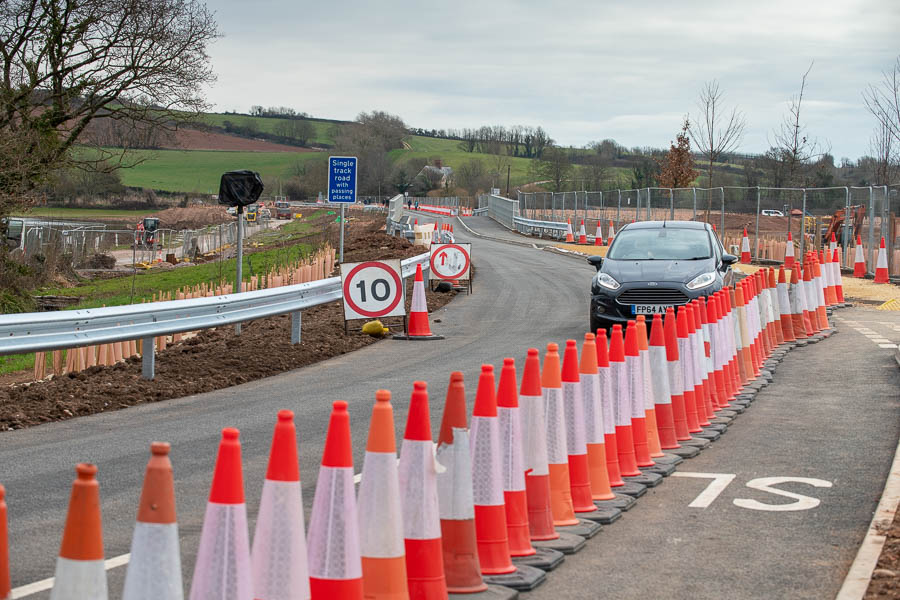
Animal and plant species already resident in the area, including beavers, bats and rare birds like the Cetti’s warbler and little ringed plovers, continue to thrive in the valley. The evolution of habitat from agricultural land to wetland habitat has only just begun, but already rare bird species like lesser yellowlegs, white egrets, avocets, glossy ibis, spoon bills and at least two ospreys, have been seen.
Ecologist Mark Wills, an ornithologist with Hi-Line, worked on the project for more than two years. He said: “We have had two different ospreys call in on migration. Normally they just stop over for a day or two – this time they remained on site for nearly two weeks, which is amazing. We’ve got a bigger body of water, and the ospreys seem to have felt better able to feed.”

That work and the future management of the site is the responsibility of the East Devon Pebblebed Heaths Trust (EDPHT) – a charity set up by Clinton Devon Estates in 2006 to manage the Heaths and Otter Estuary. To give the new Reserve area the support it deserves, the charity has appointed a new ranger, Rick Lockwood.
Rick said: “We will monitor how the habitat develops and the wildlife responds over the coming years. We really hope the local community develops a strong connection to the site and with the improved footpath networks we are now seeing a broader range people getting out into nature who may have found this more difficult in the past.”
Adaptation to climate change is difficult – both the acceptance and the action. But addressing head-on the problematic issues that result from sea level rise and a history of modifications of our estuaries, can bring multiple benefits. With the project completed, the most exciting phase of the scheme now begins – that of nature recovery. Clinton Devon Estates and the Environment Agency hope that in due course the lower Otter Valley will become a model for climate adaptation and wildlife improvement that can inspire others.
Sign up to the East Devon Pebbledbed Heaths newsletter here.
